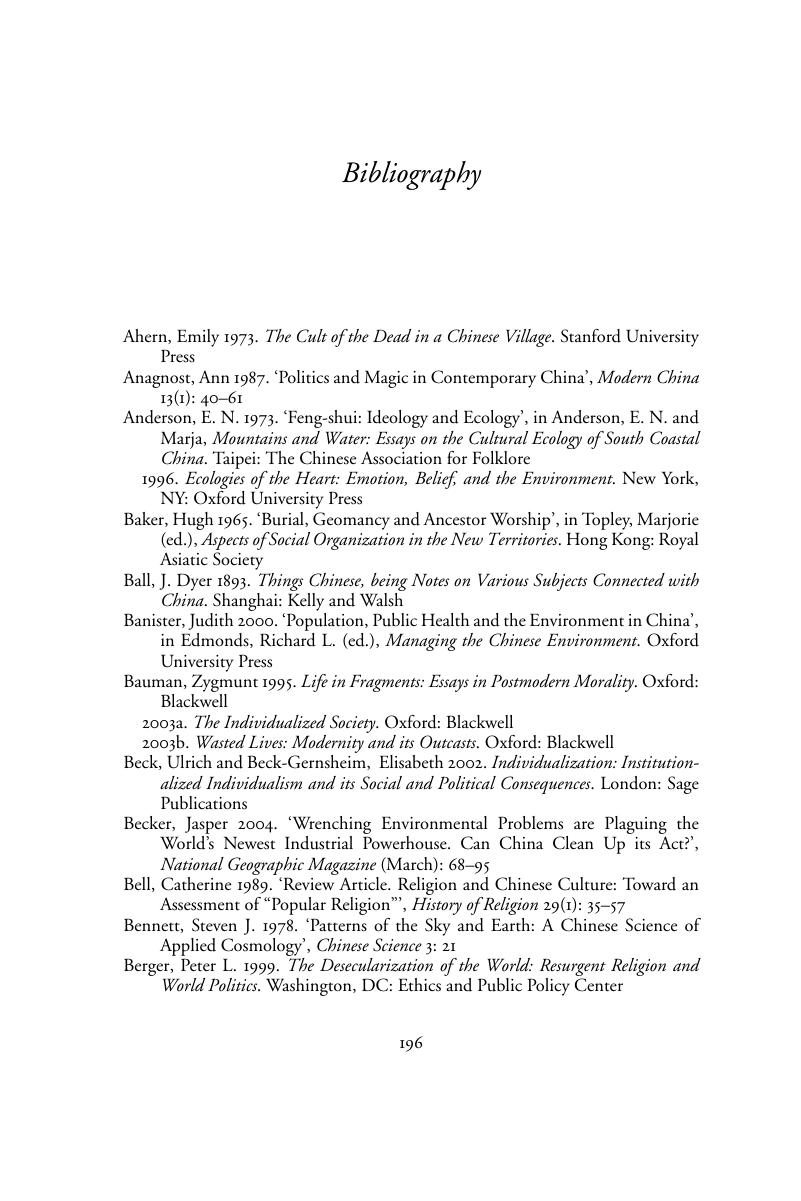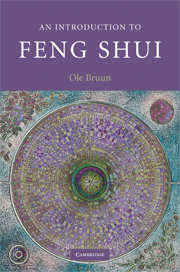Book contents
- Frontmatter
- Contents
- List of illustrations
- 1 Introduction
- 2 A brief history of feng shui
- 3 Feng shui in the context of Chinese popular religion
- 4 Feng shui research
- 5 Cosmological principles, schools of interpretation and the feng shui compass
- 6 Feng shui in the Chinese cityscape: China proper and overseas
- 7 Modern feng shui interpretations and uses
- 8 Environmental concerns
- 9 Feng shui as cultural globalization?
- Bibliography
- Index
- References
Bibliography
Published online by Cambridge University Press: 05 June 2012
- Frontmatter
- Contents
- List of illustrations
- 1 Introduction
- 2 A brief history of feng shui
- 3 Feng shui in the context of Chinese popular religion
- 4 Feng shui research
- 5 Cosmological principles, schools of interpretation and the feng shui compass
- 6 Feng shui in the Chinese cityscape: China proper and overseas
- 7 Modern feng shui interpretations and uses
- 8 Environmental concerns
- 9 Feng shui as cultural globalization?
- Bibliography
- Index
- References
Summary

- Type
- Chapter
- Information
- An Introduction to Feng Shui , pp. 196 - 207Publisher: Cambridge University PressPrint publication year: 2008



